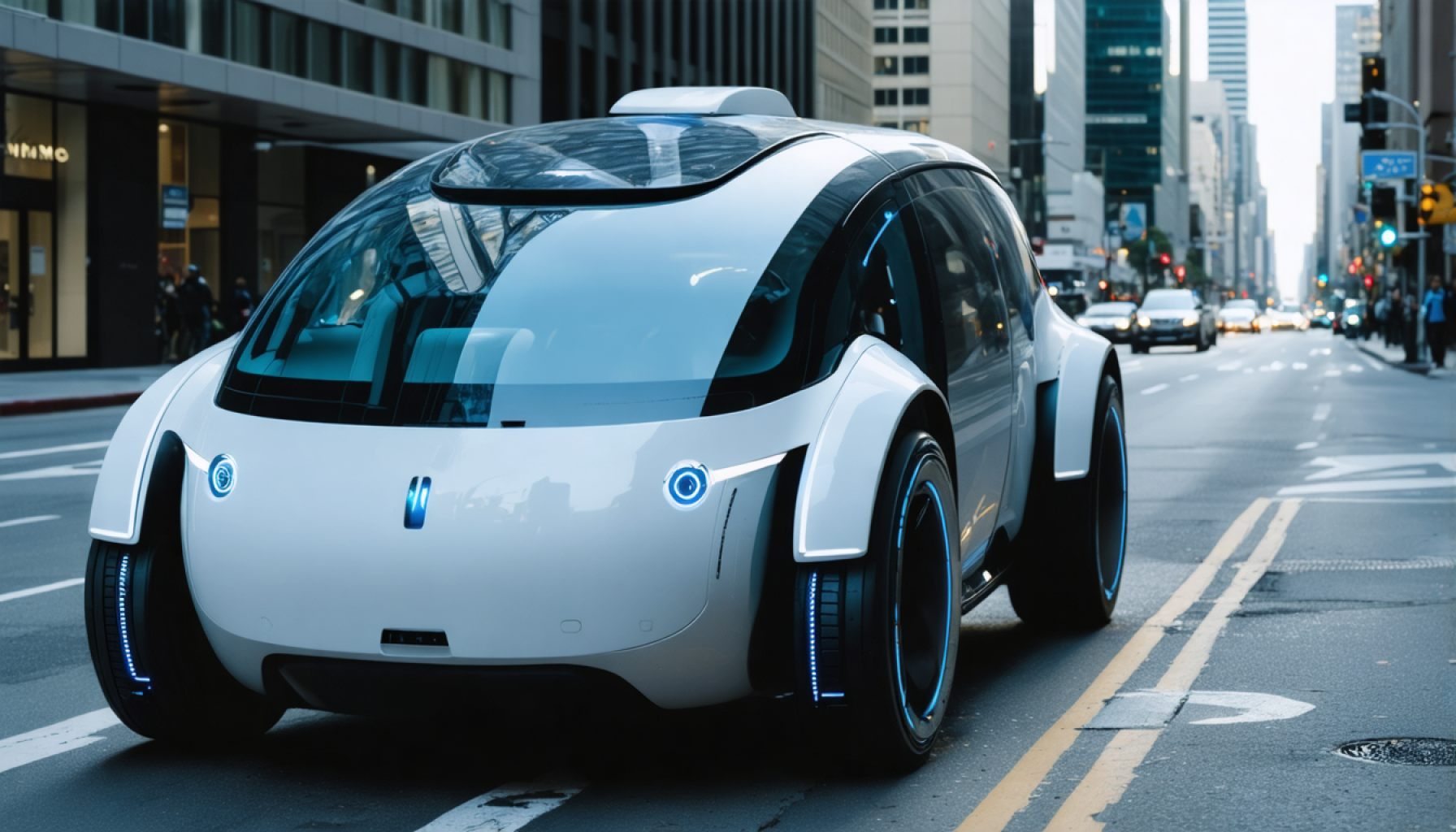- Waymo’s autonomous vehicles are encountering frequent parking violations in San Francisco, totaling 589 infractions in the past year.
- These incidents highlight a gap in autonomous vehicle programming, specifically in adapting to intricate urban environments.
- Challenges include navigating complex parking signs, shifting loading zones, and unexpected street closures.
- The situation underscores the need for self-driving technology to integrate with urban life, beyond merely technical innovation.
- This brings attention to the importance of urban adaptability in the development of autonomous transportation.
- Waymo’s effort to solve these issues may contribute significantly to creating smarter, more efficient cities.
On the bustling streets of San Francisco, one might expect traditional sights like iconic cable cars and vibrant street art. Yet, a modern phenomenon is rapidly adding its own mark to the cityscape—Waymo’s autonomous vehicles. These self-driving titans, although hailed for their innovative technology, have been stealthily amassing an unexpected collection: parking tickets.
In the past year alone, Waymo’s fleet has accumulated a staggering 589 parking violations, pulling an unusual spotlight onto the face of automated driving. Each infraction represents an unforeseen hurdle in the adoption of autonomous technology. Thoughtfully programmed to glide through traffic with ease, these robotaxis are not programmed to evade the intricacies of San Francisco’s stringent parking regulations.
Visualize the streets peppered with white vehicles, their LIDAR sensors glistening under the California sun, yet peppered with bright orange parking notices. It paints a picture not just of technological oversight but of the delicate balancing act between innovation and regulatory realities.
Despite the best intentions, these autonomous vehicles are navigating through an unforgiving maze of urban rules. The city’s complex parking signs, ever-shifting loading zones, and sudden street closures pose particular challenges. Ironically, in a world entrusting computers with the task of driving, the humble parking ticket resurfaces as a symbolic brake pedal, grounding these futuristic pods in the present-day challenges.
Experts believe this parking predicament shines a light on a significant gap in current autonomous vehicle programming—urban adaptability. The triumph of self-driving technology depends not only on mastering the open road but also on anticipating and responding to unpredictable urban environments.
For Waymo, the message is clear: the road to efficient and fully trustworthy autonomous transport navigates through more than just technology. It must merge seamless integration with the everyday rhythms of urban life. Perhaps, in solving these puzzles, Waymo’s team will lead the charge not only in technological advancement but also in crafting a harmonious evolution toward smarter cities. Thus, as cities continue to evolve alongside technology, these parking ticket woes become less a liability and more a critical step toward a future where personal vehicles and public infrastructure work in perfect unison.
The Unexpected Challenge: Waymo’s Self-Driving Cars and Parking Tickets in San Francisco
Overview of Waymo’s Autonomous Vehicles
Waymo, a subsidiary of Alphabet Inc., has been at the forefront of developing self-driving technology. With a fleet of autonomous vehicles navigated by a sophisticated combination of sensors, cameras, and machine learning algorithms, Waymo aims to revolutionize urban mobility. However, the recent accumulation of parking tickets highlights the ongoing challenges in integrating this technology into complex urban landscapes like San Francisco.
Underlying Reasons for Parking Violations
1. Complex Urban Environment: San Francisco’s dense city landscape, with its plethora of parking signs and rules, creates a challenging environment for autonomous navigation systems. Human drivers often rely on intuition and experience to interpret vague or conflicting signals, a skill still developing in autonomous vehicles.
2. Static Programming Limitations: Current navigation systems are highly advanced in terms of understanding movement and driving patterns. However, when it comes to interpreting the city’s parking nuances—like temporary restrictions or sudden lane closures—they still fall short, as these systems are primarily programmed to follow static rules.
3. Adapting AI for Urban Challenges: The AI used in these vehicles must continuously learn from urban traffic idiosyncrasies and parking regulations. Continuous updates and learning algorithms are imperative for improving responsiveness in unpredictable situations.
Real-World Implications and Use Cases
1. Smart City Integration: There’s an opportunity here for creating more interconnected smart city initiatives. Sharing real-time data between cities and autonomous vehicle fleets could enhance compliance and reduce violations.
2. Role in Urban Planning: As cities evolve, urban developers and city planners can use insights from the challenges faced by autonomous vehicles to design infrastructures that better accommodate future mobility solutions.
3. Partnership Opportunities: Collaboration between tech companies and municipalities could lead to better implementation of autonomous fleets, including shared responsibilities in updating and managing urban transportation systems.
Challenges and Limitations
– Regulatory Challenges: Navigating the bureaucratic landscape and acquiring regulatory approval remains a hurdle as automation technology outpaces legislation.
– Public Perception and Trust: Incidents like parking tickets affect public confidence in autonomous vehicles, highlighting the need for transparent communication about how these systems improve over time.
Market Trends and Future Predictions
1. Increased Investment in AI Development: Companies are likely to increase investment in AI technology to refine urban adaptability capabilities. This growth may help address parking-related challenges more effectively.
2. Hybrid Systems: We may see a shift toward hybrid systems where human oversight aids autonomous systems in complex environmental interpretations, like atypical parking situations.
3. Policy Evolution: Cities may reform regulations in response to technological advancements, including dedicated areas for driverless vehicles alongside traditional ones.
Actionable Recommendations
– Enhanced Mapping Programs: Investing in high-detail, real-time mapping technologies could significantly reduce parking violations.
– Dynamic Rule Libraries: Developing a dynamic set of rules that can update based on real-world findings daily would help mitigate these challenges.
– Public Awareness and Engagement: Engage the community in dialogues about autonomous vehicle advancements to maintain transparency and buy-in.
Conclusion
While parking tickets underscore the limits of current autonomous vehicle programming, they also reveal a substantial opportunity for growth. By addressing these urban challenges, Waymo and other tech companies can further encourage a future where autonomous vehicles and human-centric city planning thrive in harmony.
For more on the exciting world of tech innovations, visit Google.
